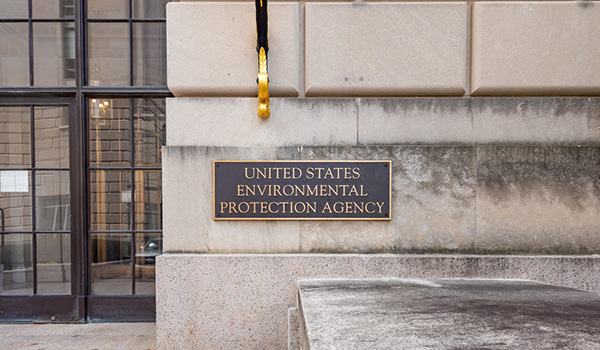The EPA's Rule Withdrawal Impact on Environmental Due Diligence
By: Ellen M. Hames & Karen L. Karr

Since our last post, “New ASTM Standard for Commercial Real Estate Phase I Environmental Site Assessments”, the Environmental Protection Agency (the “EPA”) withdrew its direct final rule to adopt the new ASTM E1527-21 standard for the EPA’s “All Appropriate Inquiry” rules. The “All Appropriate Inquiry” rules provide a framework under which a person may gain limited protection against environmental liabilities arising under the Comprehensive Environmental Response, Compensation, and Liability Act (CERCLA) (42 U.S.C. § 9601) and its related regulations. The direct final rule was to take effect after a public comment period unless the EPA received adverse public comments. On May 2, the EPA withdrew the direct final rule, indicating it received adverse comments and would address those in a revised rule modeled after the parallel proposed rule the EPA published with the direct final rule. While timing is unclear, we still expect the EPA to formally adopt ASTM E1527-21 for the “All Appropriate Inquiry” rules. Most of the adverse comments raised concerns with having both ASTM E1527-13 and ASTM E1527-21 apply and requested that the new standard replace the old. Based on these comments and the parallel proposed rule, we expect the EPA to phase out ASTM E1527-13 when (or shortly after) the EPA adopts the ASTM E1527-21 standard for the “All Appropriate Inquiry” rules and that the proposed parallel rule will otherwise remain intact. It’s important to note, there will be no additional public comment period, so the EPA’s adoption of the final rule may occur quickly. For now, we wait, and people may seek environmental site assessments (“ESA”) using the ASTM E1527-13 standard or the ASTM E1527-13 and E1527-21 standards.
The remainder of this post will focus on the practical impact of the new standard and a “best practices” approach for environmental due diligence in commercial real estate transactions moving forward.
1. You should still obtain an environmental site assessment (“ESA”).
Once adopted, the expected rule change will not remove the need for, or the benefit of, an ESA. As noted, a compliant Phase I ESA (“Phase I”) not only provides a limited defense to environmental liability under CERCLA but also reduces the risk of finding environmental conditions after closing that could delay construction or operational schedules, quickly cut into a project budget, or jeopardize a lien on, and risk with respect to, the subject property. If a Phase I shows a Recognized Environmental Condition (“REC”), the party seeking protection under the All Appropriate Inquiry rules cannot stop at a Phase I and should engage an environmental consultant to complete a Phase II ESA (“Phase II”). A Phase II is a more invasive site examination and, again, is only required if the Phase I finds an REC. The environmental consultant’s findings in the Phase II will determine the next steps.
2. Make sure the Phase I clearly references a permitted ASTM E1527 standard.
Until the EPA adopts its final rule with respect to the new ASTM E1527-21 standard, a Phase I prepared under this standard will not meet the current All Appropriate Inquiry rules. During the interim and not knowing when the EPA will make the next move, we recommend parties proceed with an environmental consultant that complies, as much as possible, with both the ASTM E1527-13 and ASTM E1527-21 standards. This is especially true if closing will not occur until later this year or later. Those seeking an ESA should first consult with their attorney and environmental consultant to confirm if the EPA has taken further action with respect to the ASTM E1527-13 or -21 standards. Thereafter, they should discuss the standards with the environmental consultant and clearly set forth, in the engagement and the ESA, the standard(s) that will be and are used. In any case, those seeking an ESA should make sure the environmental consultant is familiar with the old and new standards, given the changing landscape.
3. For any Phase I using the ASTM E1527-21 standard, require the Phase I work to start no later than 180 days before closing or a timely update.
Under the new ASTM E1527-21 standard, the environmental consultant’s work must start no more than 180 days before closing. If a closing is delayed or there is a need to obtain a Phase I more than 180 days before closing, a party can still rely on the Phase I if (i) the environmental consultant’s initial work on the Phase I started no sooner than 365 days before closing; AND (ii) the environmental consultant, within 180 days before closing, updates the following components of the Phase I:
- owner, operator, and occupant interviews;
- recorded environmental cleanup lien search;
- federal, tribal, state, and local government record search and review;
- visual inspection of the subject property and of adjoining properties; and
- environmental consultant’s declaration.
In no case will a Phase I, for which work started more than 365 days before closing, comply under the new standards. Based on this, it is imperative a party obtaining a Phase I using the ASTM E1527-21 standard understands when the Phase I work will begin in relation to closing. They should anticipate the need for an update when the environmental consultant is hired and negotiate the fee for any required supplemental assessment or update upfront. In short, environmental due diligence will take a bit more careful planning in light of the revised standard.
4. Still complete title review of the subject property.
The updated ASTM E1527-21 standard clarifies the responsibility to review the land records to determine if land use or activity restrictions or environmental liens that bind or otherwise cover the subject property exist. This is the responsibility of the party seeking the ESA, not the environmental consultant. The party responsible should turn over its findings to the environmental consultant. The title search must go back as far as 1980. The party seeking an ESA should confirm with the title examiner or its BrownWinick attorney that the abstract and abstract certification comply with this requirement.
Environmental due diligence, in any case, remains an important part of the process when it comes to the purchase, financing, and improvement of real estate. To assist with this process, we will continue to monitor the EPA’s rules related to the ASTM E1527-21 standard and provide updates when available.


